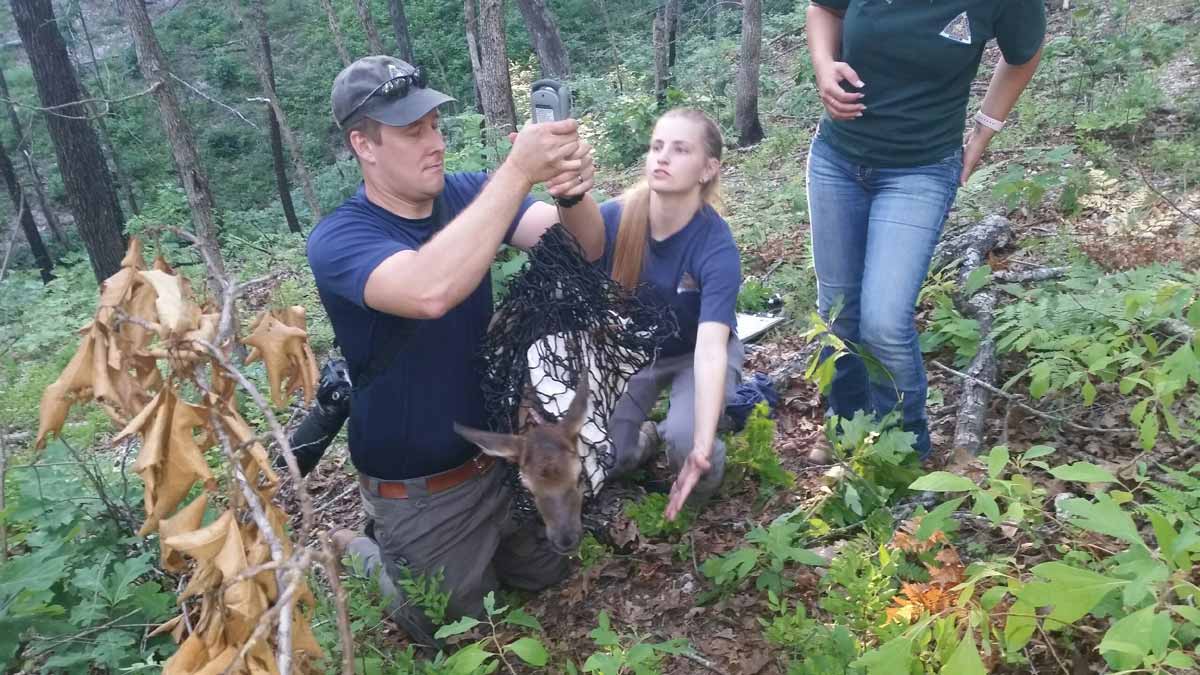Six years after being reintroduced onto their historic Missouri range, the elk population is getting a helping hand in its quest to grow thanks to advanced technology.
The Missouri Department of Conservation (MDC) joined forces with researchers from the University of Missouri and University of Montana to capture 57 (17 bulls, 38 cows and two calves) elk during the 2016-17 capture season.
 “Capture of these individuals was part of regular monitoring efforts to help us better understand how elk are utilizing their habitat, monitor survival and to check if cows were pregnant,” said Aaron Hildreth, MDC cervid biologist. “Thirty-one of 34 (91 percent) adult cows and two of four (50 percent) yearling cows we caught were pregnant!”
“Capture of these individuals was part of regular monitoring efforts to help us better understand how elk are utilizing their habitat, monitor survival and to check if cows were pregnant,” said Aaron Hildreth, MDC cervid biologist. “Thirty-one of 34 (91 percent) adult cows and two of four (50 percent) yearling cows we caught were pregnant!”
How did they determine those birth rates? That’s where the helpful technology comes into play.
 After capturing and chemically immobilizing cows, researchers place vaginal implant transmitters (VITs) in them. The gizmos allow biologists to detect when the cows give birth in the spring, find newborn calves, assess their health and fit the calves with a collar to monitor their survival. Such efforts from a year earlier allowed workers to capture and collar 21 newborn calves, 14 of which survived to be one year of age. They also determined that 40 calves were born in 2016.
After capturing and chemically immobilizing cows, researchers place vaginal implant transmitters (VITs) in them. The gizmos allow biologists to detect when the cows give birth in the spring, find newborn calves, assess their health and fit the calves with a collar to monitor their survival. Such efforts from a year earlier allowed workers to capture and collar 21 newborn calves, 14 of which survived to be one year of age. They also determined that 40 calves were born in 2016.
“Working with elk is fantastic. It is truly humbling to be so close to such a majestic animal, yet physically and mentally demanding to ensure both staff and animal safety,” added Hildreth, who estimates about 140 animals make up Missouri’s overall elk herd.
“The population is growing slowly and is showing signs of increased calf production. The next couple of years will be exciting ones for elk in Missouri! “
The Rocky Mountain Elk Foundation provided both funding and volunteer manpower to assist with initial reintroduction efforts as well as ongoing funding and volunteer support for additional habitat enhancement work.
